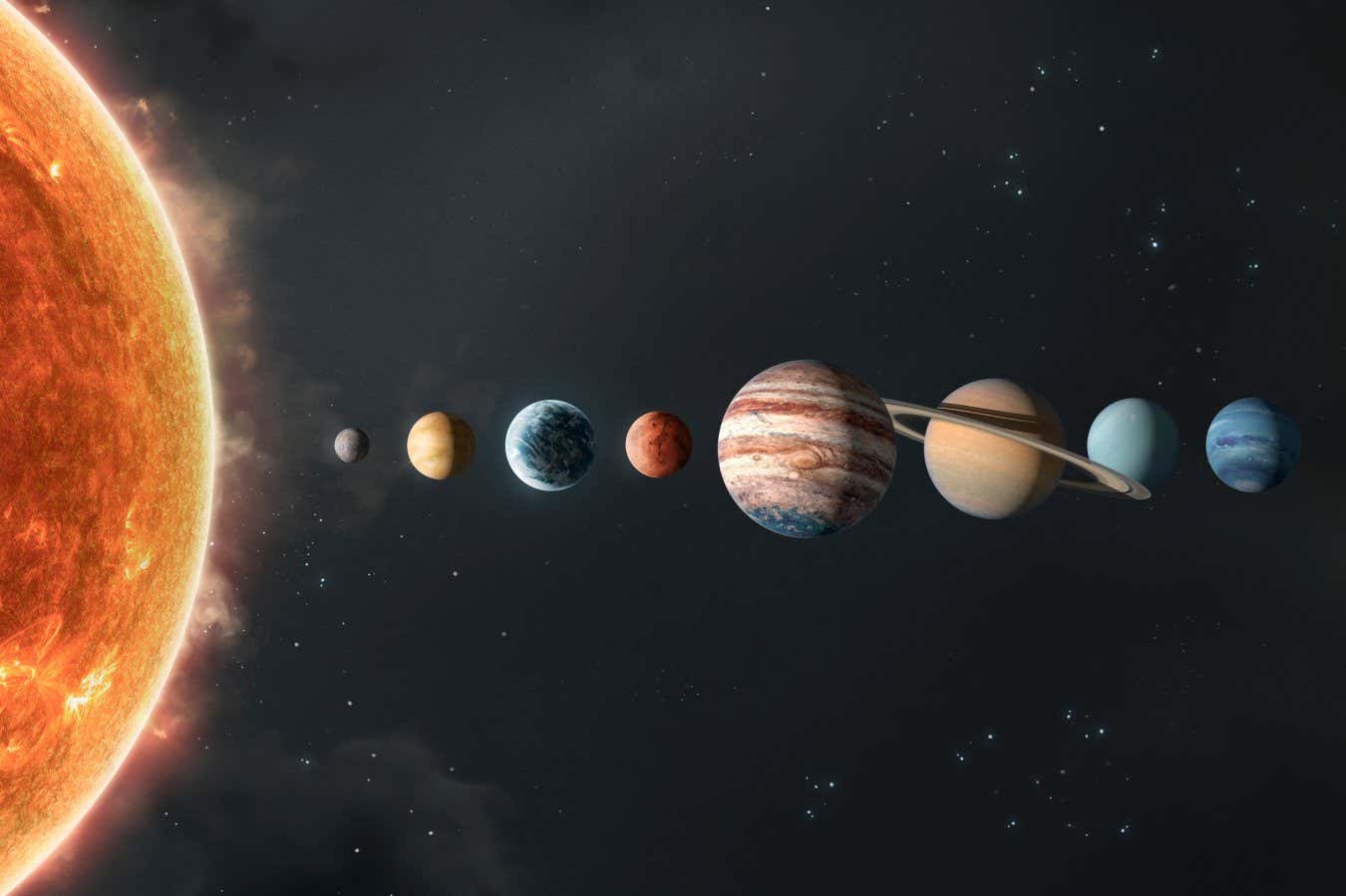For a few evenings around 28 February, every planet in the solar system will be visible in the night sky, thanks to a rare great planetary alignment. Here’s how to make sure you don’t miss this planetary parade.
By Leah Crane
27 February 2025
An artist’s impression of the solar system
Shutterstock/Vadim Sadovski
All of our solar system’s planets are lining up in the night sky at once this week. This extraordinary celestial event will see the sky scattered with seven visible planets in what is known as a great planetary alignment, or a “planetary parade”.
The eight planets in our solar system orbit the sun in roughly the same plane because they all originally formed from the same disc of debris around the sun. The line the sun traces across the daytime sky – called the ecliptic – aligns with this plane, so when the planets appear in the sky, they all appear roughly along the ecliptic. It isn’t a perfect line of planets, because their orbits are tilted slightly, but it is fairly close.
Read more
Dozens of stars show signs of hosting advanced alien civilisations
Advertisement
Never is this more apparent than during a planetary alignment. Typically, only a few planets share the night sky, but an unusual alignment of all seven planets will be visible for a few evenings around 28 February, depending on your location.
The best time to look is right after sunset, with a chance to see all of the planets stretching in an arc across the sky, though all of them except Mars, Jupiter and Uranus will be close to the horizon. Those three will continue to hang around for most of the night, while by the time the sky is completely dark, Mercury and Saturn will have sunk below the horizon, with Neptune and Venus following shortly after.
The main thing preventing such alignments from being visible all of the time – aside from weather – is the difference in orbital periods among the planets. Mercury, which is closest to the sun, takes about 88 Earth days to complete an orbit, while Neptune, which is most the distant planet, takes nearly 165 Earth years.
